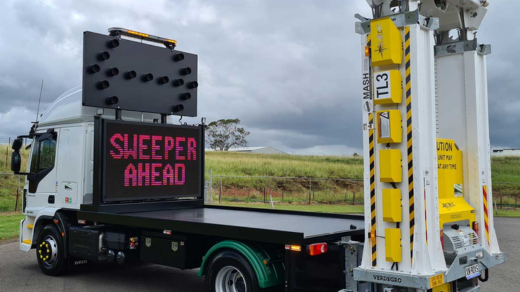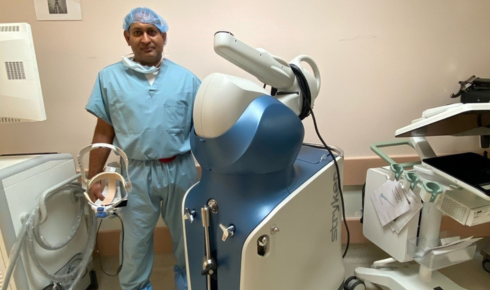
Innov8’s recent updates to the Australasian New Car Assessment Program (ANCAP) standards have significant implications for fleet management. This article explores how these changes impact fleet compliance and safety measures, highlighting the importance of staying up-to-date with the latest ANCAP requirements to ensure the well-being of drivers and vehicles.
INNOV8 Equipment provides fleet managers with essential tools and insights to navigate the updated ANCAP standards effectively. By leveraging their expertise, companies can enhance fleet safety and ensure regulatory compliance. Staying informed and equipped with the right resources is crucial for maintaining high safety standards and protecting drivers on the road.
Introduction to Innov8’s ANCAP Updates
Introduction to Innov8’s ANCAP Updates:
Innov8 is proud to introduce its new and improved ANCAP Updates, designed to provide the latest safety ratings and information for vehicles in the Australian and New Zealand markets. With safety being a top priority for both consumers and manufacturers, staying informed about the safety performance of vehicles is crucial when making purchasing decisions. The ANCAP Updates offered by Innov8 aim to bridge this gap by offering comprehensive and up-to-date safety ratings, test results, and insights to help consumers make informed choices about their next vehicle purchase. By partnering with ANCAP, the leading independent vehicle safety authority in Australasia, Innov8 ensures that its updates are reliable, accurate, and trustworthy.
Understanding ANCAP Safety Ratings
The Australasian New Car Assessment Program (ANCAP) safety ratings are an important tool for consumers to evaluate the safety of vehicles available in the market. ANCAP conducts rigorous crash tests and assessments on new vehicles to determine their safety performance in various impact scenarios. The safety ratings provided by ANCAP range from one to five stars, with a higher number of stars indicating better crash protection and safety features. By understanding ANCAP safety ratings, consumers can make informed decisions when purchasing a new vehicle, as they can compare the safety performance of different models and prioritize safety features that align with their needs and preferences.
ANCAP safety ratings take into account various factors such as adult occupant protection, child occupant protection, vulnerable road user protection, and safety assist technologies. These comprehensive assessments provide a holistic view of a vehicle’s safety performance, helping consumers prioritize safety features that are important to them. By understanding ANCAP safety ratings, consumers can also incentivize car manufacturers to prioritize safety in their vehicle designs, ultimately contributing to the overall improvement of vehicle safety standards in the automotive industry. Overall, ANCAP safety ratings serve as a valuable resource for consumers seeking to make informed choices that prioritize safety and well-being on the road.
Innov8 Equipment Ancap Updates provides the latest insights and developments in vehicle safety standards, ensuring you stay informed about new advancements. With comprehensive analyses, this resource highlights essential safety features, empowering consumers to make educated decisions. Discover how these updates can influence safer automotive designs and enhance industry standards.
Importance of Compliance in Fleet Management
Compliance in fleet management is crucial for ensuring the safety of drivers, vehicles, and the general public. Regulations and standards set by governing bodies are in place to minimize risks associated with operating a fleet of vehicles. Adhering to compliance measures helps to prevent accidents, reduce liabilities, and protect the reputation of the company. By following rules related to driver qualifications, vehicle maintenance, and operational practices, fleet managers can mitigate potential legal issues and financial penalties. Compliance also plays a significant role in promoting ethical business practices and upholding the integrity of the organization. It fosters trust among stakeholders and demonstrates a commitment to responsible and sustainable operations.
Furthermore, compliance in fleet management contributes to operational efficiency and cost savings. By maintaining accurate records, scheduling routine inspections, and implementing safety protocols, organizations can prevent unexpected breakdowns, downtime, and costly repairs. Compliance standards also help in optimizing fleet performance by ensuring that vehicles are operating at their best capacity, reducing fuel consumption, and extending the lifespan of assets. Additionally, compliance requirements often include measures to track and analyze data, which can lead to better decision-making, resource allocation, and overall fleet management strategies. Ultimately, prioritizing compliance in fleet management not only enhances safety and reputation but also drives operational excellence and financial success.
Impact of Innov8’s Updates on Fleet Safety
Innov8’s updates have had a significant impact on fleet safety by introducing advanced technology that enhances driver behavior monitoring and vehicle maintenance. The implementation of real-time tracking and monitoring systems allows fleet managers to closely monitor driver behavior, such as speeding, harsh braking, and distracted driving. By providing instant feedback and alerts, Innov8’s updates help improve driver awareness and encourage safer driving practices. Additionally, the integration of predictive maintenance tools in the updates helps fleet managers schedule timely inspections and repairs, reducing the risk of unexpected breakdowns and accidents due to mechanical failures. These advancements not only contribute to a safer operating environment for drivers but also help organizations minimize risks and liabilities associated with fleet operations.
Furthermore, Innov8’s updates have facilitated better communication and collaboration among fleet operators, drivers, and managers, leading to improved safety protocols and practices. The updates offer features such as automated reporting and analysis tools that provide valuable insights into fleet safety performance and areas that require attention. This data-driven approach enables fleet managers to identify trends, patterns, and potential risks, allowing them to proactively implement safety measures and training programs. By fostering a culture of safety and accountability within the organization, Innov8’s updates have helped reduce the number of accidents, injuries, and incidents within fleets. Overall, the impact of these updates on fleet safety is profound, creating a safer and more efficient environment for fleet operations.
Key Features of Innov8’s ANCAP Updates
Innov8’s ANCAP Updates offer a range of key features that set it apart from traditional safety assessment tools. Firstly, the platform provides real-time updates on the latest safety ratings for vehicles, allowing users to stay informed about the safety performance of different models. This feature is crucial for consumers, car manufacturers, and policymakers to make informed decisions regarding vehicle safety. Additionally, Innov8’s ANCAP Updates offer comprehensive data analysis and reports that break down the safety ratings and provide insights into areas of improvement for vehicle manufacturers. This data-driven approach enables stakeholders to understand the specific safety strengths and weaknesses of each vehicle, facilitating targeted improvements to enhance overall safety performance.
Moreover, Innov8’s ANCAP Updates incorporate advanced technologies such as artificial intelligence and machine learning algorithms to enhance the accuracy and reliability of safety assessments. These technologies enable the platform to analyze vast amounts of data efficiently and identify patterns or trends that may not be apparent through traditional methods. By leveraging AI and machine learning, Innov8 can provide more nuanced and detailed safety ratings, offering a deeper understanding of a vehicle’s safety performance beyond traditional metrics. This innovative approach not only improves the effectiveness of safety assessments but also sets a new standard for safety evaluation in the automotive industry.
Benefits of Upgrading to Innov8’s Safety Standards
Upgrading to Innov8’s safety standards offers a multitude of benefits for businesses, employees, and customers alike. One key advantage is the enhanced protection it provides for workers, reducing the risk of accidents and injuries in the workplace. By implementing Innov8’s cutting-edge safety protocols, companies can create a safer environment for their staff, leading to increased employee morale, productivity, and retention. Moreover, a commitment to high safety standards can also help organizations comply with regulatory requirements and avoid costly penalties, lawsuits, and reputation damage associated with safety violations. By upgrading to Innov8’s safety standards, businesses can demonstrate their dedication to creating a culture of safety and well-being for all stakeholders.
In addition to promoting a safer work environment, upgrading to Innov8’s safety standards can also result in improved operational efficiency and cost savings. By investing in advanced safety technologies and training programs, companies can streamline their processes, reduce downtime, and minimize the risk of costly accidents and disruptions. Furthermore, prioritizing safety can lead to lower insurance premiums, as insurers often offer discounts to businesses with strong safety records. By proactively upgrading to Innov8’s safety standards, organizations can not only protect their employees and assets but also enhance their bottom line through reduced costs and increased operational efficiency.
Challenges in Implementing ANCAP Updates for Fleets
Implementing ANCAP updates for fleets presents a myriad of challenges for businesses. One significant challenge is the financial burden associated with upgrading or replacing vehicles to meet the latest safety standards. Fleet managers must carefully balance the costs of purchasing new vehicles or retrofitting existing ones with the need to ensure the safety of their drivers and passengers. This can be particularly challenging for smaller businesses with limited budgets, as they may struggle to afford the necessary upgrades without compromising other aspects of their operations. Additionally, the rapid pace of technological advancements in vehicle safety features means that fleets may need to undergo frequent updates to remain compliant with ANCAP standards, further adding to the financial strain.
Another challenge in implementing ANCAP updates for fleets is the logistical complexity of managing a large number of vehicles across different locations. Coordinating the inspection, maintenance, and upgrades of a diverse fleet can be a daunting task, especially for businesses operating in multiple regions. Ensuring that all vehicles meet the required safety standards and are kept up-to-date with the latest ANCAP guidelines requires robust communication and tracking systems. Moreover, the downtime associated with implementing upgrades can disrupt operations and impact productivity, posing additional challenges for fleet managers. Overcoming these logistical hurdles requires careful planning, efficient resource allocation, and effective coordination between various stakeholders within the organization.
Compliance Requirements for Fleet Operators
Fleet operators are subject to a wide range of compliance requirements that are designed to ensure the safety of their vehicles, drivers, and the general public. One key compliance requirement for fleet operators is maintaining their vehicles in roadworthy condition. This includes regular inspections, maintenance, and repairs to ensure that all vehicles meet safety standards. Compliance with regulations such as vehicle weight limits, emissions standards, and other technical requirements is essential to avoid fines, penalties, and potential accidents on the road. Fleet operators must also ensure that their drivers are properly licensed, trained, and compliant with regulations governing driver hours, rest periods, and other safety protocols. Failure to comply with these requirements can result in serious consequences, including accidents, injuries, and legal liabilities.
In addition to vehicle and driver compliance, fleet operators must also adhere to regulations governing the transportation of goods. This includes ensuring that all cargo is properly secured, labeled, and transported in accordance with regulations governing hazardous materials, perishable goods, and other specific types of cargo. Compliance with regulations related to insurance, permits, and documentation is also essential for fleet operators to operate legally and avoid disruptions to their operations. By staying up to date with compliance requirements, fleet operators can not only protect the safety of their drivers and the public but also maintain the reputation and sustainability of their business in a highly regulated industry.
How Innov8’s Updates Align with Industry Standards
Innov8’s updates are designed to align seamlessly with industry standards, ensuring that users have access to the latest technologies and features that are essential for success in their respective fields. By staying up-to-date with industry standards, Innov8 is able to provide its users with cutting-edge tools and solutions that meet the evolving needs of modern businesses. These updates are crucial for maintaining competitiveness in the market and staying ahead of the curve in a rapidly changing business landscape. Innov8’s commitment to aligning its updates with industry standards demonstrates its dedication to providing users with the most innovative and effective solutions available.
Furthermore, by aligning its updates with industry standards, Innov8 ensures that its users can easily integrate new features and functionalities into their existing workflows. This seamless integration minimizes disruptions and allows users to leverage the full potential of Innov8’s tools without the need for extensive retraining or overhauls of their current processes. By adhering to industry standards, Innov8 also enhances interoperability with other software systems and platforms, facilitating smoother collaboration and data sharing across different parts of the organization. This alignment with industry standards helps users maximize the value they derive from Innov8’s updates and ensures that they can stay agile and responsive to changing market demands.
Future Trends in Fleet Safety and Compliance
Future trends in fleet safety and compliance are continuously evolving to address emerging challenges and technological advancements. One key trend is the increasing integration of advanced driver assistance systems (ADAS) in fleet vehicles. These systems utilize technology such as sensors, cameras, and artificial intelligence to enhance driver safety by providing real-time alerts for lane departure, forward collision warnings, and adaptive cruise control. As these technologies become more widespread, fleet operators can expect to see a significant reduction in accidents and improved overall safety performance. Additionally, the use of telematics and data analytics will continue to play a crucial role in fleet safety and compliance. By collecting and analyzing data on driver behavior, vehicle performance, and route efficiency, fleet managers can proactively identify risks, implement targeted training programs, and optimize operations to ensure compliance with regulations and industry standards.
Another future trend in fleet safety and compliance is the increasing focus on sustainability and environmental impact. With growing concerns about climate change and air pollution, fleet operators are under pressure to reduce emissions and adopt eco-friendly practices. This trend is driving the adoption of electric vehicles (EVs) and alternative fuel vehicles in fleets, as well as the implementation of green driving initiatives to minimize fuel consumption and carbon footprint. In addition, regulatory bodies are imposing stricter emissions standards and promoting incentives for greener fleet operations. As a result, fleet safety and compliance strategies will increasingly need to align with sustainability goals to ensure not only regulatory compliance but also environmental stewardship. By embracing these trends, fleet operators can enhance their reputation, reduce operating costs, and contribute to a more sustainable future.






